Here are a few seedlings of Rosa tunquinensis which germinated in early Autumn, this is a totally new species for me to work with and I think it will go well with hybrid Musks/ hybrid mutifloras.

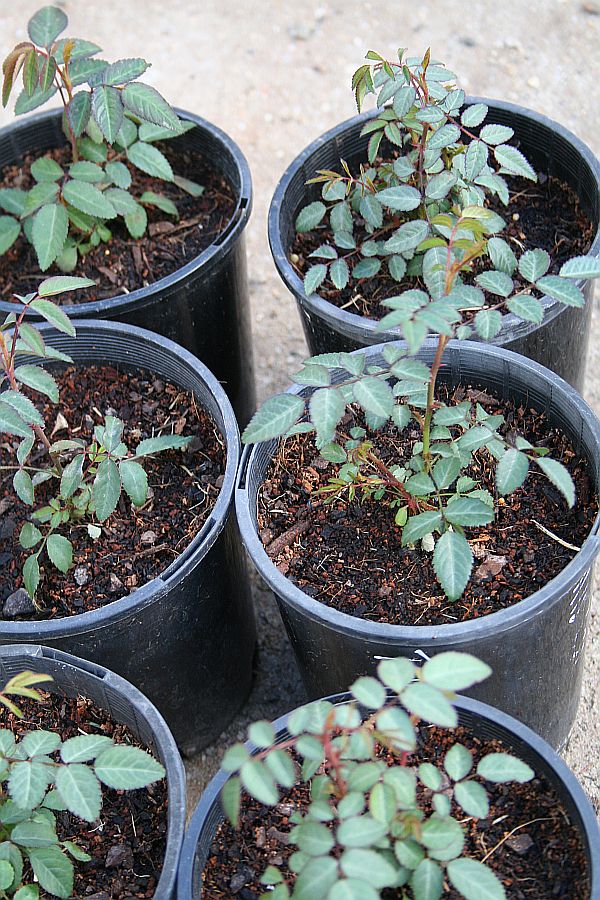
There are a lot of F3 Virginiana hybrids in this batch
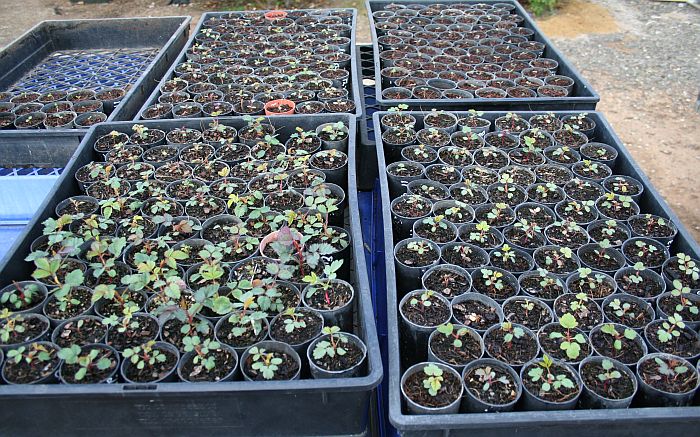
I love the blue-green foliage
Cathy
Central NJ, zone 7a
Yes, nice foliage Warren.
Thanks Rob and Kathy
In the trays of seedlings are crosses which I have working on for a few years to produce tough healthy cultivars.
Seedling of Kathleen X Rosa glauca
(Mimas X R. virginiana) X Robe Fleurie
( Baronne Ed Rothschild X Mme C Testou) X (Sympathie X (Mimas X R. Virginana))
Great Southern Skies X ( Sympathie X R. virginiana) Double pink form
( Baronne Ed Rothschild X Mme C Testou) X ( Charles Austin X (Mimas X R. Virginana))
Seeding of Kathleen X Seedling M10 N9 ( Hulthemia seedling from the other thread)
Valkeeri X ( Charles Austin X (Mimas X R. Virginana))
(Wendy X Altissimo) X (Sympatie X (Mimas X R. Virginana))
Single red (( Sympathie X R. virginiana) X Seedling of Violette
Mme Lombard X (Sympatie X (Mimas X R. Virginana)) Type 1
( Baronne Ed Rothschild X Mme C Testou) X (Sympatie X (Mimas X R. Virginana)) Type 1
Single red (Sympathie X R. Virginiana ) X Seedling of Kathleen
Wendy X (Sympathie X R. Virginiana ) Double Pink form
Double Pink form (Sympathie X R. Virginiana ) X Therese Bugnet
Ten Thousand Lights X Seedling of Violette
Seedling of Ballerinette X Bunda
Whiz Kid X (Sympathie X (Mimas X R. Virginana)) Type 2
That’s about all for the time being.
Warren
I posted this thinking there would be some interest in the interaction between Virginiana hybrids and diploid species and diploid cultivars, but then maybe not.
Warren
Warren,
I enjoy seeing your cross and seedling lists (please keep posting them). I’m not familiar with a lot of them so I don’t usually comment. That being said, I would say that I do love the Mimas X R. virginana and the Sympathie X R. virginana seedlings you have posted on hmf (3H 40G b and 3H 40G c being my favorites).
I’m curious to know how well the species characteristics are holding up as you dilute the gene pool. Now that you are getting 2 - 3 generations away from R. virginiana, are you still seeing things like the R. virginana foliage?
Thanks Andre.
there are a lot of cultivars used here in this forum which I have never seen, but what I do is look up the breeding lines they were derived from. This gives me a direction to which way I will go, if it looks like it will produce something that is viable. The cultivars do not have to be identical but have similar grandparents or even similar species families to have similar results. Also this acceptance to diploid pollen would also apply to fertile triploids which produce fertile diploid pollen, this makes it very interesting for a wide range of crossing
The Virginiana foliage lost its apperance after the F2, and the F3 foliage has an unique look . I have enough diversity in these F3, and if they form repeat flowering cultivars, they will be crossed back amongst them selves. I was after healthy and hardy seedlings when I began this little project and thanks to Joe up North, I have a rough idea of their cold tolerance.
Warren
A few more germinated.
Shirley Jean X (Sympathie X R. Virginiana ) Double Pink form
Westerland X ( Charles Austin X (Mimas X R. Virginana))
Disco Lemonade X (Sympatie X (Mimas X R. Virginana)) Type 1
These are only my species hybrids listed, I have been working on a lot of other things.
Warren
Here are a couple of pics of F3 Virginiana hybrid seedlings. Foliage is very different from one breeding line to the other.
Seedling O11 P47 (Valkeeri X ( Charles Austin X (Mimas X R. Virginana))
Seedling O18 P47 ( Baronne Ed Rothschild X Mme C Testou) X ( Charles Austin X (Mimas X R. Virginana))
Warren

Warren, do you have opinions on the best way to go about making something for tropical areas like southeast Asia or India? Thanks.
Hi Charles,
Breeding for the tropics with Summer rainfall and high humidity, is a complete turn around to what people here would do. I can only give you my opinion of what I would do, if I was to breed rose cultivars, which could tolerate these conditions. I would be looking at China’s, Tea’s and if you wanted to inject new genes in through the use of species, then I would look at Rosa’s brunonii, longicuspis , davidii and multiflora. I would probably use Wedding Day too, as it sets hips quite easily. You would lose some bloom form and they would probably look a bit , but I think that would be pleasing.
Warren
I appreciate it, that gives me some things to study.
A couple of some more Virginiana Hybrids.
The first one is another, Seedling O18 P47 ( Baronne Ed Rothschild X Mme C Testou) X ( Charles Austin X (Mimas X R. Virginana)) showing different foliage again.
Second seedling is a Great Southern Skies X F1 (Sympathie X R. virginiana), this one is displaying red foliage.

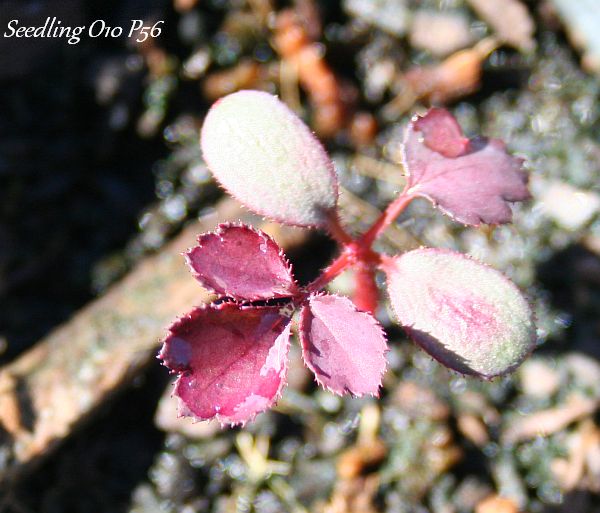
Warren,
Have you done any crosses between two of your F1 virginiana hybrids? Something like 15H 40G X 3H 40G. I wonder how effective F1 crosses would be in stabilizing the virginiana characteristics (especially the foliage) if you keep the percentage of virginiana blood high - and then watch them throughout the generations after that.
So what I am envisioning is something like (HT1 X virginiana)X(HT2 X virginiana) to get your F2. The HT could represent hybrid teas or any “modern” class of rose in this scenario. Then select for repeat (if any) and either cross with a F1:[(HT1Xvirginiana)X(HT2Xvirginiana)] X HT3 X virginiana or cross with another virginiana: [(HT1Xvirginiana)X(HT2Xvirginiana)] X [(HT3 X virginiana)X(HT4Xvirginiana)]. Follow that into the next generation where you have three choices F1 X F3, F2 X F3, and F3 X F3. And so on for several more generations.
So if a breeder were to do these type of crosses, my questions would be: 1) is the virginiana characteristics/foliage consistently retained; 2) at what rate is it retained; 3) when can an outcrossing (one without R. virginiana blood) be made that would produce a decent amount of virginiana characteristics; and 4) what influence does the modern varieties have on the colors and health of the seedlings. I would imagine that work with other species may have similar patterns, but may be different because of the dominance/recessive of the individual species genes.
Hi Andre, Last year I did a inbreeding cross of 3H 40G , the double pink form . One grew to a staggering 8ft in height during its first year, at the moment the foliage is changing into its autumn tones. I kept two out of this cross, one is a runt of 2 ft high with virginiana type foliage and the other the 8fter which has foliage similar to its Kordesii lines. When I first started this cross , I wasn’t intentionally after the foliage, just the health and the hardiness. I am happy with these two factors with the added bonus of Autumn colours.
I am hoping that these new F3 's will give me a repeat flowering seedlings, it is these F3’s which I will form a new breeding line. At the moment I have around 10 different F3 Virg crosses occurring and around 4 new F2 Virg lines crossed with Hybrid Musks and Hybrid Multiflora. Some of these F3’s will be crossed back over each other, the F2’s will be used to develop new F3’s. I wouldn’t like to use too much HT at this moment, I have a few Hybrid Spinossima and Moyesii crosses which I will utilise first along with a number of Rugosa Hybrids. Thanks to Joe Berg , who germinated some seed of mine, I now have a rough idea of the hardiness of the F1 to go on for future planning.
Your Questions about R. virginiana traits.
1/ 20% of F1 seedlings displayed R. virginiana foliage.
2/ 100% of seedlings displayed no R. virginiana foliage characteristics in the F2 and F3 crosses, although some are showing Autumn colour.
3/ The health of seedlings has been very good, the colours of blooms are rich pinks and when crossed with yellow moderns the yellow came through to the seedlings. I have at the moment F3’s which have (Rosa eglanteria ) in them for added toughness.
4/ Other work I have done using other species showed similar results, it is for the long haul and results come slowly.
Warren
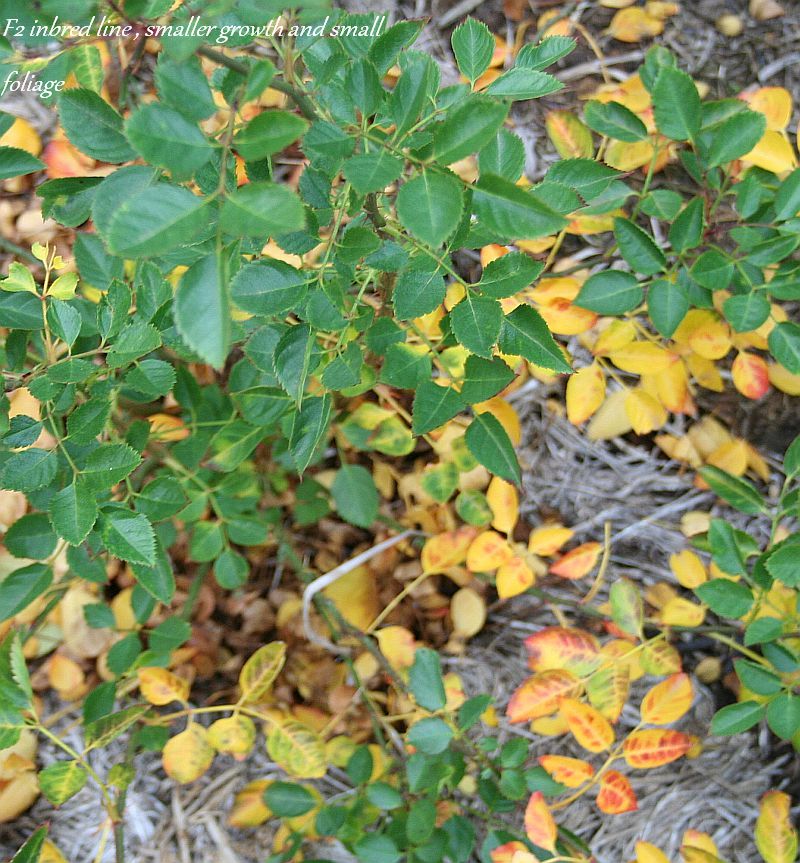

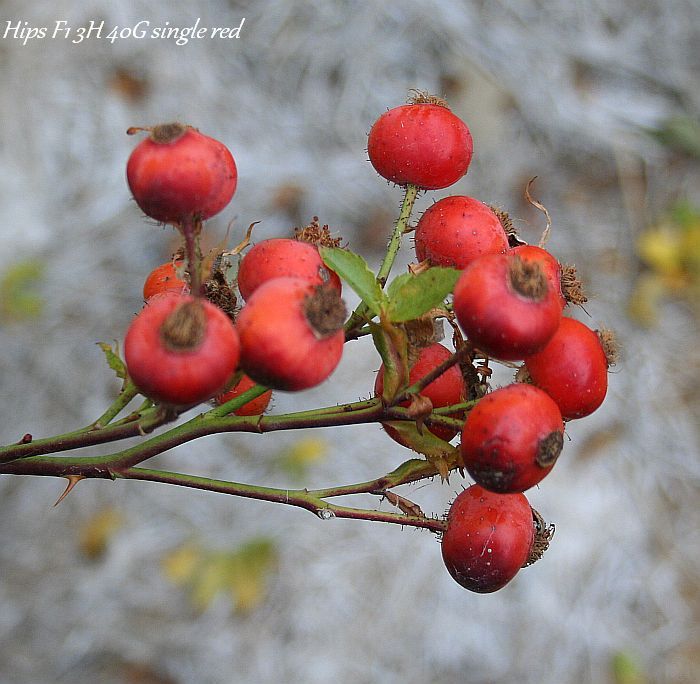
I checked my seed trays for germination this morning and noticed I have a R. sweginzowii X Seedling of Kathleen that has popped its head up.
Warren
This is a 8 week old seedling O24 P18, a seedling with Hybrid Spinosissima bloodlines. I noticed the other day a small flower bud forming.
Warren
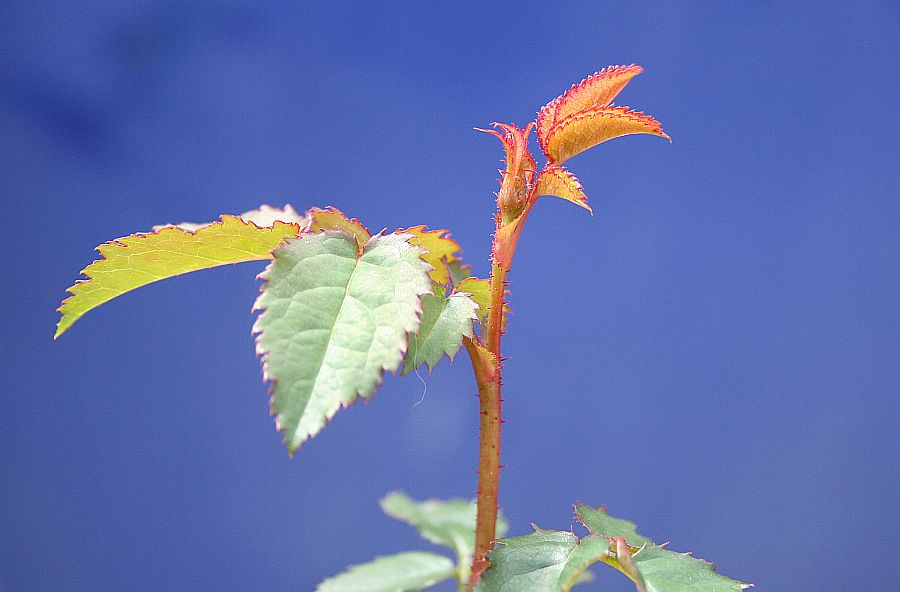
Those are exciting recent developments, Warren! And the R. tunquinensis is ridiculoulsy beautiful.